Wander.al uses cookies to improve user experience. By using our website you consent to all cookies in accordance with our Cookie Policy.
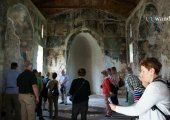
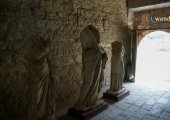
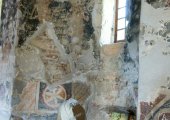

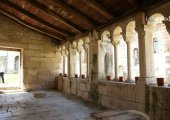
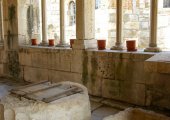
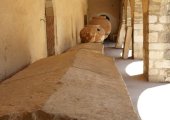
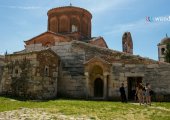
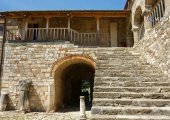
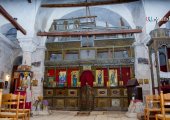
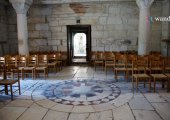
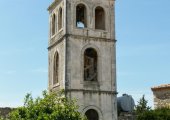
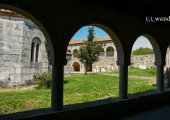
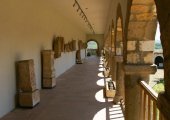
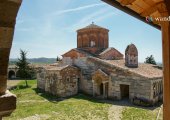
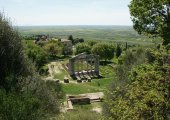


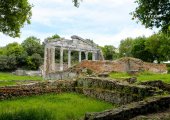


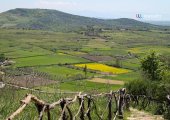
























Apollonia was an ancient city in Illyria, located on the right bank of the Aous river (modern-day Vjosë). Its ruins are situated in the Fier region, near the village of Pojani, in modern-day Albania. Apollonia was founded in 588 BC by Greek colonists from Corfu and Corinth, on a site initially occupied by Illyrian tribes and was perhaps the most important of the several classical towns known as Apollonia. Apollonia flourished in the Roman period and was home to a renowned school of philosophy, but began to decline in the 3rd century AD when its harbor started silting up as a result of an earthquake. It was abandoned by the end of Late Antiquity.
The site of Apollonia lay on the territory of the Taulantii, a cluster of Illyrian tribes that remained closely involved with the settlement for centuries and lived alongside the Greek colonists. The city was said to have originally been named Gylakeia after its founder, Gylax, but the name was later changed to honor the God Apollo.
It is mentioned by Strabo in his Geographica as "an exceedingly well-governed city". Aristotle considered Apollonia an important example of an oligarchic system, as the descendants of the Greek colonists controlled the city and prevailed over a large serf population of mostly Illyrian origin. The city grew rich on the slave trade and local agriculture, as well as its large harbour, said to have been able to hold a hundred ships at a time. The city also benefited from the local supply of asphalt, which was a valuable commodity in ancient times, for example for caulking ships. The remains of a late sixth-century temple, located just outside the city, were reported in 2006 and it is only the fifth known stone temple found in present-day Albania.
Apollonia, like Dyrrachium further north, was an important port on the Illyrian coast as the most convenient link between Brundusium and northern Greece, and as one of the western starting points of the Via Egnatia leading east to Thessaloniki and Byzantium in Thrace. It had its own mint, stamping coins showing a cow suckling her calf on the obverse and a double stellate pattern on the reverse, which have been found as far away as the basin of the Danube.
The city was for a time included among the dominions of Pyrrhus of Epirus. In 229 BC, it came under the control of the Roman Republic, to which it was firmly loyal and it was rewarded in 168 BC with booty seized from Gentius, the defeated king of Illyria. In 148 BC, Apollonia became part of the Roman province of Macedonia, specifically of Epirus Nova. In the Roman Civil War between Pompey and Julius Caesar, it supported the latter, but fell to Marcus Iunius Brutus in 48 BC. The later Roman emperor Augustus studied in Apollonia in 44 BC under the tutelage of Athenodorus of Tarsus; it was there that he received news of Caesar's murder.
Apollonia flourished under Roman rule and was noted by Cicero in his Philippics as magna urbs et gravis, a great and important city. Christianity was established in the city at an early stage, and bishops from Apollonia were present during the First Council of Ephesus (431) and the Council of Chalcedon (451). Its decline, however, began in the 3rd century AD, when an earthquake changed the path of the Aoos, causing the harbour to silt up and the inland area to become a malaria-ridden swamp. The city became increasingly uninhabitable as the inland swamp expanded, and the nearby settlement of Avlona (modern-day Vlorë) became dominant. By the end of antiquity, the city was largely depopulated, hosting only a small Christian community. This community (which probably is part of the site of the old city) built on a nearby hill the church of the Dormition of the Theotokos, (Albanian: Shën Mëri), part of the Ardenica Monastery.
The city seems to have sunk with the rise of Vlora. It was "rediscovered" by European classicists in the 18th century, though it was not until the Austrian occupation of 1916–1918 that the site was investigated by archaeologists. Their work was continued by a French team between 1924–1938. Parts of the site were damaged during the Second World War. After the war, an Albanian team undertook further work from 1948 onwards, although much of the site remains unexcavated to this day. Some of the team's archeological discoveries are on display within the monastery, known as the Museum of Apollonia (opened in 1958) and other artifacts from Apollonia are in the capital Tirana. Unfortunately, during the anarchy that followed the collapse of the communist regime in 1990, the archeological collection was plundered and the museum was temporarily closed. The ruins were also frequently dug up by plunderers for relics to be sold to collectors abroad.
In December 2011, a new museum opened, replacing an older museum dating from 1985, and was funded by UNESCO's MDG-F Joint Programme ”Culture and Heritage for Social and Economic Development”.
In August 2010, a French-Albanian team of archaeologists unearthed a bust of a Roman soldier, 50 years after the discoveries of other full body statues in the 1958-1960 period expeditions, led by Albanian scholar Selim Islami and Russian Professor Blavatski.
A German-Albanian team has been working on the Hellenistic theatre at Albania, throwing light on the development of Greek theatres and also local variants.
One of the participants in the Council of Ephesus in 431 was a Felix who signed once as Bishop of Apollonia and Byllis, at another time as Bishop of Apollonia. Some assume that the two towns formed a single episcopal see, others suppose he was, strictly speaking, Bishop only of Apollonia, but was temporarily in charge also of Byllis during a vacancy of that see. One of the participants at a council held in Constantinople in 448 signed as Paulus Episcopus Apolloniada al. Apolloniatarum, civitatis sanctae ecclesiae, but it is uncertain whether he was associated with this Apollonia. At the Council of Chalcedon in 451, Eusebius subscribed simply as Bishop of Apollonia. In the letter of the bishops of Epirus Nova to the Byzantine Emperor Leo I in 458, Philocharis subscribes as Bishop of what the manuscripts call "Vallidus", and which editors think should be corrected to "Byllis". Whether Philocharis is to be considered Bishop also of Apollonia depends on the interpretation of the position of Felix in 431.
The Annuario Pontificio lists Apollonia as a titular see, thus recognizing that it was once a residential diocese, a suffragan of the archbishopric of Dyrrachium. It grants no such recognition to Byllis.
Source: Wikipedia.org